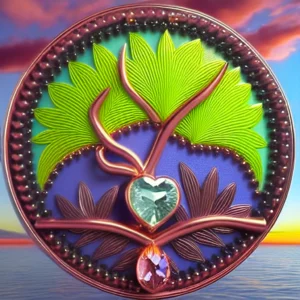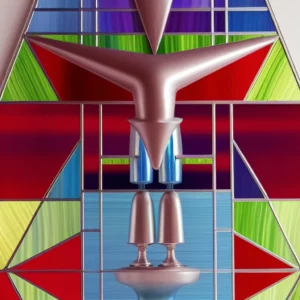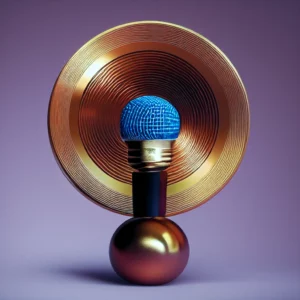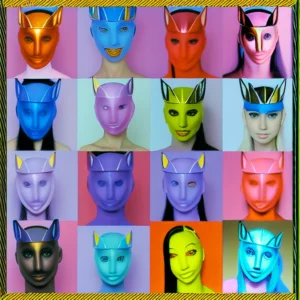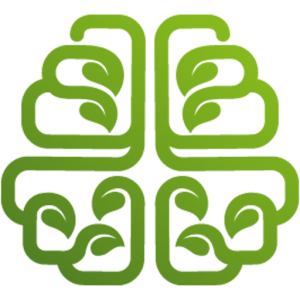 Join Us for CGC Year 8: Fire Infusion
Join Us for CGC Year 8: Fire Infusion
Enrollment is now open for Conscious Growth Club Year 8 – for one week only! Come join us for an intense and engaging year of growth. Our enrollment window closes May 1st at midnight Pacific Time. CGC's theme this year is Fire Infusion. Follow the link to see if you're qualified for membership. There are a LOT of surprises and upgrades to CGC this year.
Redesigning StevePavlina.com – Part 1
This is the first part of a 9-part series about the process I used to redesign and relaunch StevePavlina.com, which took about seven months from start to finish. Think of it as an in-depth postmortem. I think this series will have value for anyone who runs a web business or a WordPress site or who’s interested in creating one of their own. I’ll include lots of detail about how I made key decisions, solved problems, and gained the skills needed to drive the project from start to finish. You’ll also see how I used universal personal growth principles to guide decisions and actions, especially when my pre-existing skills were inadequate. So this will be like a free mini-book to give you insight into a sizable project. I also hope that by sharing this, it will inspire you to successfully tackle a large project of your own.
Please note that if you’re reading this series long after its initial publication date, some of the details I point out regarding the design of StevePavlina.com may be out of sync with what you see on the actual site. The site will continue to evolve after this series is published, so some elements are bound to change.
Mindset and Motivation
When I tackle a new challenge, I usually like to start with the principle of Truth. This means doing my best to ensure that my thoughts, beliefs, and attitudes towards the situation are grounded in reality. Sometimes this means being careful not to wrap my ego into the success of a project because that can lead to procrastination by way of failure avoidance. This principle may also involve making sure that I’m not projecting unnecessary fear, worry, or hesitation onto a challenge. When I do this well, I set myself up with a realistic can-do attitude. I stir up some positive motivation instead of negative stress.
I take maybe 20 minutes to assess and accept the inner and outer truths about the challenge. I usually do this by journaling about it.
Let’s start with the outer truth. When I began this project, it was pretty obvious to other people and to myself that my website looked very dated and badly needed a facelift. I would get occasional feedback from people asking if my website was from the 1990s. It actually launched on October 1st, 2004, but they weren’t too far off. The site didn’t have a responsive design since it was based on a 2004 theme that pre-dated smartphones and tablets.
The site was also rather messy on the backend. It consisted of a mishmash of dozens of hand-coded HTML pages and custom PHP scripts combined with a WordPress blog. Many pages of the site weren’t integrated into WordPress. I’d use a Mac program called Coda to edit them and would FTP them to the site when I wanted to update them. I knew it would be much better to integrate everything into WordPress. I also knew that it would be a lot of work to do this. And that was only one small piece of the total amount of work to be done.
Despite its outdated look, the site was still attracting plenty of traffic. StevePavlina.com has had more than 100 million visitors since it began, often exceeding 10 million page views in a month. Some individual articles on the site continued to receive thousands of pageviews each day. People were coming to the site for the content, not because it was beautiful.
Even so, the site was still very usable. It wasn’t broken or buggy. But it needed to be redesigned, both on the front end and the backend. Some of the design decisions I made in 2004 were good ones. Others didn’t stand up well to the test of time.
The site was earning decent income all along. It’s been bringing in six figures a year continuously since 2006, and it does this with zero income from advertising. Although improving the site’s monetization wasn’t a major factor in the redesign, I figured that a more modern looking site would probably attract more repeat traffic and would generate more income in the long run as well.
As for the inner truth, I felt emotionally out of sync with the old design. It served everyone reasonably well for many years, and I had improved it incrementally from time to time, but I felt ready to move on and replace it with something nicer. However, I also felt overwhelmed by the magnitude of the project, so I delayed tackling it for years. Most years my life was just too busy with too many other things going on, such as doing workshops, going through a divorce, and dealing with the other parts of my life and business. So this project was always being put on the back burner since I always felt it would be fine for a few more months as-is. There was no immediate pressure to improve it.
I also accepted that I didn’t have the skills to complete the project on my own. Design wasn’t my strength. I’m color blind too, which makes good design that much harder. I believed I could learn what I needed to learn, and I love building new skills, but I also realized this would require significant time and patience. I would have to upgrade some of my weaknesses.
I didn’t feel it would be wise to tackle such a project in piecemeal fashion by trying to do little upgrades along the way. The site really needed to be redesigned from scratch, not incrementally improved. I felt that the best approach would be to tackle it immersion-style, meaning that I would live and breathe web development till it was done. I think that was a good decision. There was a lot of interconnectivity between different parts of this project. I’d have lost that big picture understanding of how the parts fit the whole if I tackled it in small chunks spread out over too much time, which likely would have led to some inconsistent design decisions.
Accepting the truths about the old site, the project, and my feelings wasn’t difficult. I had accepted those truths years ago. The main challenge was creating enough space to devote to this project. Eventually I reached the point where my schedule was open enough that I felt ready to begin.
As an experienced game developer and a published author, I know that getting a creative project to converge and ship can be difficult. It’s easy to get lost in feature creep along the way. It’s easy to get distracted. It’s easy to feel overwhelmed by detailed work. At the same time, I wanted to take my time and not feel rushed to launch prematurely. Even though this wasn’t a very specific standard, I decided that I’d launch the new site when I felt it was ready to launch. I expected that after the launch, I’d still have more ideas to improve the site afterwards, and undoubtedly visitors to the site would contribute suggestions as well. So the launch wouldn’t be the end of improving the site, but it would be a significant leap forward.
In practice this fairly vague launch target worked out okay. I probably held the site in development for a few months longer than necessary, and I could have launched it earlier and added many of the improvements after the launch, but I don’t regret launching it when I did.
As it turned out, some of the best motivation to keep making progress towards the eventual launch was the necessity of dealing with both sites for a while. Once I had a decent prototype of the new site working, I still had to work with the old site for months, and this motivated me to keep driving the new site forward towards the launch, so I could finally replace the old site. The glaring contrast between the old and new was excellent motivation to keep working.
My motivation and work ethic remained strong throughout the project. I took breaks when I needed them, including some short vacations and one 2-1/2 week trip to Mexico along the way. I think I paced myself well.
I did not set a deadline in advance because I had no good way of predicting how long the project would take. I had some familiarity with the work to be done, but it was a creative task, and those can be unpredictable. The quality of the result was more important to me than the speed of implementation. I wanted to do the job right, not in a hurry. When people would ask me when the new website would launch, I usually told them “when it’s ready” or “soon.” I was not going to put artificial pressure on myself, and I didn’t want social pressure working against me.
Looking back, I can see that I made some good decisions in the early game that made the project go smoothly down the road. This partly involved choosing the right tools and enlisting help and support from others. Since my motivation was high, I often put in 12-hour days to work on this project, and I enjoyed the work.
In terms of mindset, I decided to approach this project like an explorer. I didn’t want to stress myself out or pressure myself to achieve some particular standard. I decided to tackle it as a growth experiment. I would explore and immerse myself in web design. I would explore how to create a better version of my website. I would explore some personal weaknesses and how I might turn them into strengths. As an explorer there’s no way to fail except by not exploring. So all I had to do was to keep exploring. I didn’t primarily think of the new website as something I would build or create. I thought of it as something that would evolve through exploration and discovery.
Social Support
I’ve previously shared why I didn’t hire a web designer. It seemed obvious that I should hire a designer for this project, and I looked for a designer for quite a while, but I never found one that I thought would be a good fit. I received plenty of offers from designers wanting to help, but I didn’t see any portfolios that inspired me. I trusted my intuition and said no to all of them. In retrospect I’m glad it turned out this way since tackling this project myself was a deeply rewarding personal growth journey. If I had hired a designer, I’d have missed out on a lot of skill development.
At the start of a new project, I often like to enlist some social support. I don’t do this for accountability per se; I do it to increase the immersion factor. By having people in my life who are already skilled in whatever I’m trying to do, I learn from them, gain motivation, and feel inspired to raise my standards. Good social support can inspire a lot of action, and it helps me overcome inertia and get moving.
In this case it wasn’t difficult to find a good source of social support. I went to the Las Vegas WordPress Meetup Group for the first time on August 19, 2015, a week before I started working on this project. They meet once a month for two hours at the Innevation Center (that’s not a typo — the nev is for Nevada), and I attended most of their meetings during this project. That was a terrific decision. At almost every meetup, I learned about new ideas and resources that I applied to this project, such as good development tools and plugins to use. I’ll share what those were later in this series. I also was able to get feedback from some of the developers there on my work in progress.
Through that meetup group, I also learned about WordCamp, which is a two-day WordPress conference. There are annual WordCamps in many cities. The timing of the next Las Vegas WordCamp couldn’t have been better, occurring only a few weeks into my project on September 19-20, 2015. For only $40 it was a terrific deal. I picked up some good tips and ideas from the sessions there. I often find that once I get moving on a project, the universe will send me terrific leads and resources along the way, but I’ll never have access to them if I’m standing still. I wouldn’t even have known of WordCamp’s existence if I hadn’t joined the meetup group, nor would I have thought to look for it. It only came into my reality once I started taking action.
I love how beautifully the Law of Attraction works sometimes. When I form an intention and start putting some energy into it, even if my actions are indirect and haphazard at first, it feels like the universe meets me halfway and starts bringing me an abundance of help and support. But if I stand still and think about getting started and spin myself in circles with endless advance planning, nothing happens, and no extra support appears. That’s why I like to directly seek out some social support right at the beginning of a project. It’s a good way to get some energy moving and flowing.
Another factor is telling people that I’m working on updating my website, such as other people at the meetup group. Hearing myself say such things makes it more real for me. It doesn’t feel like I’m just considering doing it. By saying, “I’m doing this,” I feel myself shifting into action mode, even if I haven’t written a single line of code yet.
Getting other people involved, even to a small extent, can make a project more fun, social, and motivating. I would bring my laptop with me to each WordPress meetup and to WordCamp as well, and sometimes I’d show people my site in development and ask for feedback. Or I’d talk about a problem I was having and ask for advice. I got some terrific feedback and advice from experienced web developers, which saved me a lot of time and trouble. I also received some proactive help regarding pitfalls to avoid and features to include that I otherwise might not even have considered.
In terms of the personal growth journey, you may recognize this as a deliberate application of the principle of Love from my book. We can make faster progress when we connect more deeply with a goal or project, and one of the best ways to deepen that connection is to surround ourselves with people who will increase the immersion factor. I find it difficult to stick with a project all the way to completion until and unless I’m essentially ready to bathe in it fully. So in recent years, I’ve been trying to do a better job of single-handling big projects as much as possible, so I can tackle them immersively one by one. This approach has been very productive so far, but it does take a lot of patience since many other would-be obligations have to be postponed. I have to keep saying to friends, “Ask me about that again a few months from now, and I might be able to say yes, but for now it has to be no.”
Design Philosophy
I knew that I wanted to do a ground-up redesign of the entire site. When I started though, I didn’t have a clear vision of what the new site should look like. I only knew in an abstract sense what I wanted to do.
My top priority was usability. The purpose of this website is to help people grow, and I wanted the site’s look and feel to align with that purpose. That meant clearing away clutter and making the site easier to use. I wanted people to be able to read the articles and listen to the audios without distractions. Most people come here for the articles, so I especially wanted people to have a pleasant reading experience. I just didn’t know how to accomplish that when I started. These were only abstract ideas, not concrete design decisions.
Another key improvement was to make the site device independent. I wanted it to be accessible and to look good on all device types — big monitors, laptops, tablets, cell phones, etc. Typically about 40% of visitors now access this site through a cell phone (overwhelmingly iPhones), about 5% use tablets (mostly iPads), and the other 55% use desktops or laptops. That’s a huge shift since 2004 when I started, three years before the first iPhone came out. I’d previously been using a plugin called WP-Touch to tack on a mobile version of the site, but it was a crutch, and it only worked for part of the site. What I needed was a responsive theme. Since responsive design is standard practice today, this was a very obvious upgrade to make.
On the back end, I also wanted a site that was easy to manage and maintain. Because my old site was a mixture of WordPress, HTML, and PHP files, it was sometimes complicated to manage. A big part of this redesign would involve incorporating everything into WordPress and replacing my custom PHP scripts with WordPress-aware solutions such as plugins. This would also have the benefit of making the site more secure.
The people who visit my website are real human beings to me, not numbers in a database. I’ve met hundreds of them in person and have hugged hundreds of them as well. Even my girlfriend Rachelle was a customer of mine. When doing the redesign, I did my best to apply a lot of empathy to the design. I tried to make the interface clear and to minimize potential confusion wherever possible. I didn’t design primarily for traffic or monetization, although I did give those some consideration. I figured that if I made the site respectful towards the real human beings visiting it, traffic would continue to do well, and the income would be fine.
I was aiming for clarity and simplicity but not minimalism per se. I’m not a minimalist. Personally I don’t like minimalist sites very much. I feel that stripping away too much makes a site feel drab and lifeless. I felt that some flair here and there, such as sparing use of simple animations, would liven up the site and make it more engaging. After the new site launched, I got an email from a designer who was clearly a fan of minimalism. In his email he mistakenly assumed that I was aiming for a minimalist design and somehow missed the mark. His email included a list of fixes for what I needed to change to correct these apparent oversights. But I had actually tested all of his suggestions during the site’s development, and I rejected them because they didn’t test well.
One idea I learned from exploring fashion several years ago is that my choice of clothing can reflect aspects of my personality. I thought it made sense to apply this idea to web design as well. I wanted a new site that reflected my personality and character to some extent — a site that felt like me. The old site didn’t feel like me anymore, although it may have satisfied that criterion back in 2004. I gave some thought to how I could let my personal values influence the design, values like intelligence, elegance, honesty, playfulness, and so on. Looking back on the launched version, I think I got a lot of those right, but there are some aspects of my personality that aren’t reflected in the design, such as my irreverence or sense of humor. I’m not sure I can incorporate those without degrading usability. Some qualities are much easier to express through other parts of my work anyway, such as speaking and workshops, so for now I’m okay with this.
This site has been receiving abundant traffic for more than a decade, so gaining more traffic wasn’t a design priority. These days I’m more interested in better serving my existing readers and continuing to attract people who are committed to lifelong self-improvement and conscious growth. Quality of traffic is more important than quantity, especially given how I currently monetize the site. Since my work has been uncopyrighted since 2010, so much of it is re-published, translated, and consumed on other sites now. This has made my direct traffic a less important metric to consider.
When new visitors come to the site for the first time, I mainly want to invite them to engage with the free content. I don’t expect them to sign up for the mailing list on their first visit or buy a product or sign up for a workshop right away. I just want people to receive some value from the site by reading at least one article, listening to an audio, or watching a video. Then they can decide if they want to stick around for a while and explore other parts of the site.
I didn’t want to redesign this website for the average user or for random traffic. I wanted to design it for my most engaged readers. These people will sometimes spend hours reading articles. They see the potential in conscious growth and take it seriously. They work on themselves. They’re always looking for good ideas they can apply. They’re hopeful about the future and want to keep making their lives better. They read books and go to workshops and seminars. They take action. I wanted to make the site better for these people first and foremost, not for casual, one-time visitors who are just looking for their next fix of info-crack.
As I engaged with this design process, I realized I could use a powerful shortcut to make reasonably good design decisions. The people I was designing for are people who are a lot like me. So I realized that if I designed a site that I really liked, then it would likely please most of my readers as well. Whenever I had a tricky decision to make, I paused and asked myself, If this were someone else’s site that I was visiting regularly, what would I prefer to see? That simplified many decisions. For instance, I hate pop-ups on other sites, so it’s a safe bet that most of my readers won’t like them either; consequently, I don’t use any pop-ups on this site.
Why no commenting? I had commenting enabled on my blog for the first year only. Once the site started getting 100+ comments per day, I turned them off for good. That was in 2005. I shared my reasons for turning off comments in two posts back then: Blog Comments and More on Blog Comments. That reasoning still stands. I don’t feel that comments add much value to a site like this. They can make the site stickier and more addictive, but I don’t want to addict people. I want people to take action and test ideas for themselves. It’s been my experience that people who discuss personal growth endlessly often do so as a form of procrastination. That said, it’s not my intention to prevent debate. Since my articles are all uncopyrighted, anyone is free to republish them or link to them and discuss and debate them to their heart’s content, and many people do exactly that. Not having to deal with commenting and comment spam for the past 11 years has surely saved me a lot of time too. I still value quality feedback, but this is another area where I favor quality over quantity. I normally receive the highest quality feedback during face to face interactions and from thoughtful emails, and those are abundant already.
What about branding? As I shared in the article Branding Is Fear-Based B.S., I don’t think much of branding because I’m a person, not a brand. I prefer to think in terms of relationships. I like interacting with my readers on the basis of friendship, camaraderie, mutual support, playfulness, and fun. We’re all on the same team. Trying to present myself as a brand to these people would be like trying to present myself as a brand to my girlfriend. That would be stupid, and she’d just laugh at me. Since I’m always learning, growing, and changing too, I don’t want to obligate myself to live up to some artificial public image. I have other friends who’ve done that, and I see how much it bothers them in the long run. Branding is trying to control what other people think, and I have no interest in doing that. I’d rather encourage people to think for themselves. Perhaps it’s more dangerous, but it’s also more fun.
And again due to my work being uncopyrighted, other people have already published at least 150 books under my name with more being released each month. Many websites have been created to share my work in different ways, and I have no control over them. So I wouldn’t be able to control my so-called brand identity even if I wanted to. Nor am I interested in spending years of my life fussing over my reputation, which exists solely in the minds of other people. That would be a huge distraction from doing what I love. I find it much easier to accept that some people will call me a saint, others an ogre, and I’m fine with all of that. A compassionate girlfriend makes it all irrelevant.
I know it’s common practice to create a logo for a website, but I opted not to bother with that either. Again, I’m a person, not a symbol, and this is a website for human beings. Maybe someday I’ll discover a good way to reduce myself to a logo, but so far that hasn’t happened, and I’m not losing any sleep over it. Putting my photo in the header seems goofy as well and just adds clutter. Using my own name for the home link seems fine. It’s simple and honest.
My ultimate design goal was to create a site that I really liked. I figured that if I accomplished that, it would probably please my readers too. The feedback I’ve received in the 12 days since the new site launched has been overwhelmingly positive, so apparently that simple standard worked out fairly well. The hard part was being totally honest with myself about whether I actually liked something or not, knowing that if I didn’t like it, that meant I had to rework it.
Continue to Part 2 in this series.
